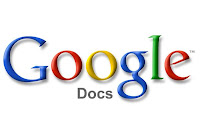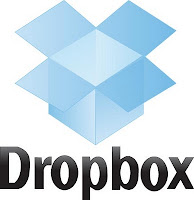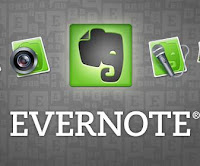I have read a great deal on the web about teachers making their classrooms paperless, which brings the following question to mind:
"Why can’t school administration become paperless too?" How many times in the course of my job do I use paper in the line of duty? Is it necessary to have physical copies of everything I do as a school principal? The answer to that last question is a 99% no of course. The 1% are usually district level documents that someone is just not quite comfortable yet with having a cyber-copy only. In reality it is possible to eliminate much of the paper used during the course of carrying out administrator duties, and to do so with inexpensive tools. Here’s my suggested list of tools to make the role of principal or school administrator paperless too.
- Google Docs: Google Docs’ sharing feature makes the act of copying and distributing a document of any kind, whether wordprocessing, spreadsheet, or presentation, just plain sinful. For example, if you want to provide your faculty with agenda, why not share a a Google Document version of it with them? Then, just send them an email invite. Or, if you want them to have a copy of a professional development presentation, send them an email invite to it as well. There’s little need to provide staff with copies of documents any more. Of course, the administrator has to be willing to allow staff to use their technology during meetings, but what 21st century school leader is going to ban staff or meeting participants from using technology? Might as well have your meetings in the dark.

- Email: Of course email is considered just a bit passé by many, but there is no better tool that allows you to put directions and information in writing to your staff. For example, if you need to get procedures to your staff regarding an up-coming open house, send it to them by email. If you need to get a parent message to a teacher, send it by email too. The amazing but simple thing about email is you have a written record of what you sent so there can be no dispute about what was said. But what about the teacher who does not read his email regularly? Sorry, but he wouldn’t survive in my school, and probably not in my district. Perhaps he needs to find a job in the jungle somewhere, away from the 21st century world of technology.
- Dropbox: Dropbox is another one of those tools that can make school administration paperless. While sharing single documents through Google Docs works well, occasionally there are multiple, lengthy documents or media that I want to share more efficiently. With Dropbox, I can place all those items in a folder and share that folder with whichever staff members need access. For example, I created an accreditation folder in Dropbox that contained all of the data and documents the accreditation team needed and invited them to share that folder. There was no need to make piles of copies of data and documents and place them in folders or notebooks. They had access to everything electronically. Dropbox makes making copies of any major documents an anachronism.

- Evernote: I don’t even have a yellow legal pad in my possession any more. Evernote’s abilities to give the user a platform to take notes makes tablets (not the electronic kind) a total waste of money. For example, while sitting in a meeting, I can take notes on those proceedings. The features that make Evernote most useful for this are: 1) instant access on any of my technological devices and 2) ability to share the resulting document with anyone else. Evernote has apps for the desktop, smartphones, and all tablets, so getting to your notes is even quicker than digging them out of your briefcase. Being able to share those notes with others either through social media or through email means no trips to the copier when you want to share them. Evernote is the most versatile piece of software in a battle against using paper for adminstrative purposes.

- Diigo: I only recently began using Diigo more in my role as administrator. I have always shared resources and interesting ideas with staff, but often it was done through either a handout or by email. Email will keep you paperless, but when it comes to sharing links to web resources, Diigo does so much better. I have set up Diigo groups geared to specific staff members and invited them to join. Now, I can post links to Web resources to those groups and because Diigo sends emails when those have been updated, my staff gets updates rather quickly. Diigo is an excellent way to share resources quickly and easily with staff members and even parents.

- Skype or Google Talk: Because our entire staff has Skype accounts and is logged in immediately in the mornings, Skype has become an excellent way to share out information even more quickly. For example, if I need to announce a procedural change for an event later in the day, I can get that out instantaneously by sending it out by Skype. Staff can just as quickly ask for clarification too. Google Talk functions in the same manner of course, except it messages individuals rather than groups. Both these tools take away the need to write short notes or memos. These are more tools to keep me away from the copier or from reaching for the notepad.
- Blogger (Or Other Blog Platform): Having a school newsletter on paper is another anachronistic habit. There are so many ways to create and distribute information in a newsletter-format, it makes no sense to print them any more. Blogging, however, is one of the easiest ways to provide newsletter-like information to staff or parents. A blog gives administrators the ability to share school news with constituent groups quickly and easily, and students can’t lose them on the way home to school. Blogs also allow for the delivery of multimedia content too. That’s something you can’t deliver through a paper copy.
Of course there are other tools out there that could contribute to making the job of school administrator as paperless as possible. These are just some of my personal, most-used tools.
If we want to encourage our teachers to become paperless and use the copier less, then as school leaders we need to take the lead and engage in becoming paperless too.




No comments:
Post a Comment